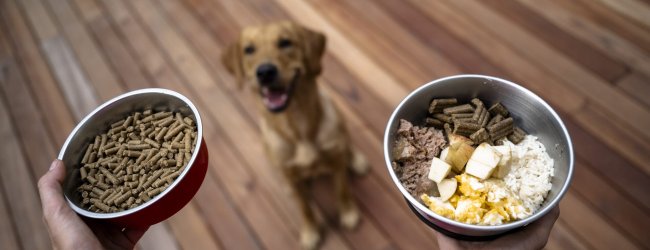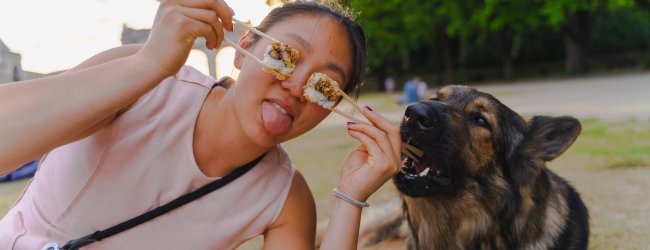Cat Feeding Schedule: How Much Should I Feed My Cat?
Here's a deep dive into how often you should feed your cat throughout the day, calories & all.
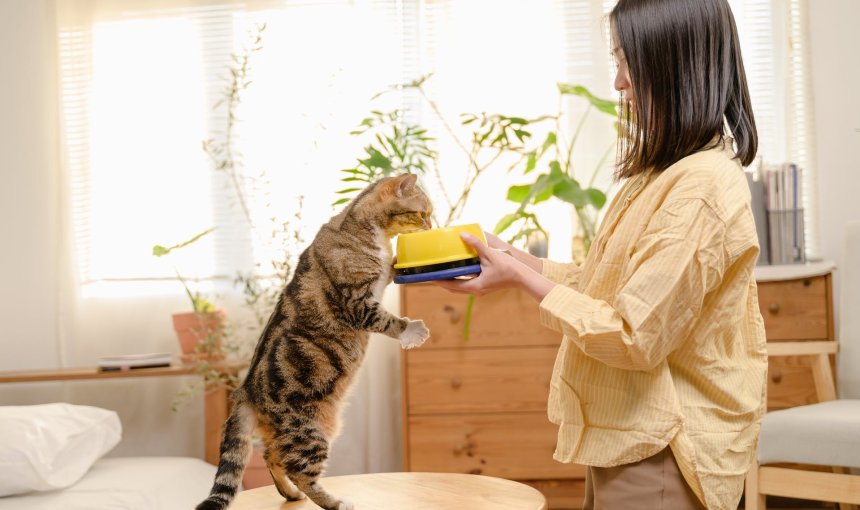
Found yourself serving kitty their fifth bowl of the day and are now asking yourself, “How often should I feed my cat?” Here’s a deep dive into the cat feeding schedule, how much dry and wet food your cat needs, and how to catch on to a change in your cat’s health much in advance.

Find out where your cat spends their time.
Read more- How often should you feed a cat?
- How many calories should a cat eat?
- How much to feed a cat by age
- How often should I feed a pregnant or nursing cat?
- How much should you feed a super active cat?
- How much dry food to feed a cat?
- How much wet food to feed a cat?
- More tips to stay on top of cat calories per day
- Wrapping up: How to build a happy, healthy cat feeding schedule
How often should you feed a cat?
Vets recommend you feed your cat at least 2-3 times a day. (About a half day – or 12 hours – apart.)1 Cat respond well to smaller meals throughout the day. If your cat grows accustomed to you feeding them at certain times of the day, their bodies adjust naturally. So they’ll usually start feeling hunger around those times. (And come meowing or crying to you as a “reminder” of sorts.)
⚠️ Avoid free feeding, or leaving a bowl of cat food out for your cat for them to graze on throughout the day. It’s one of the leading causes of feline obesity.
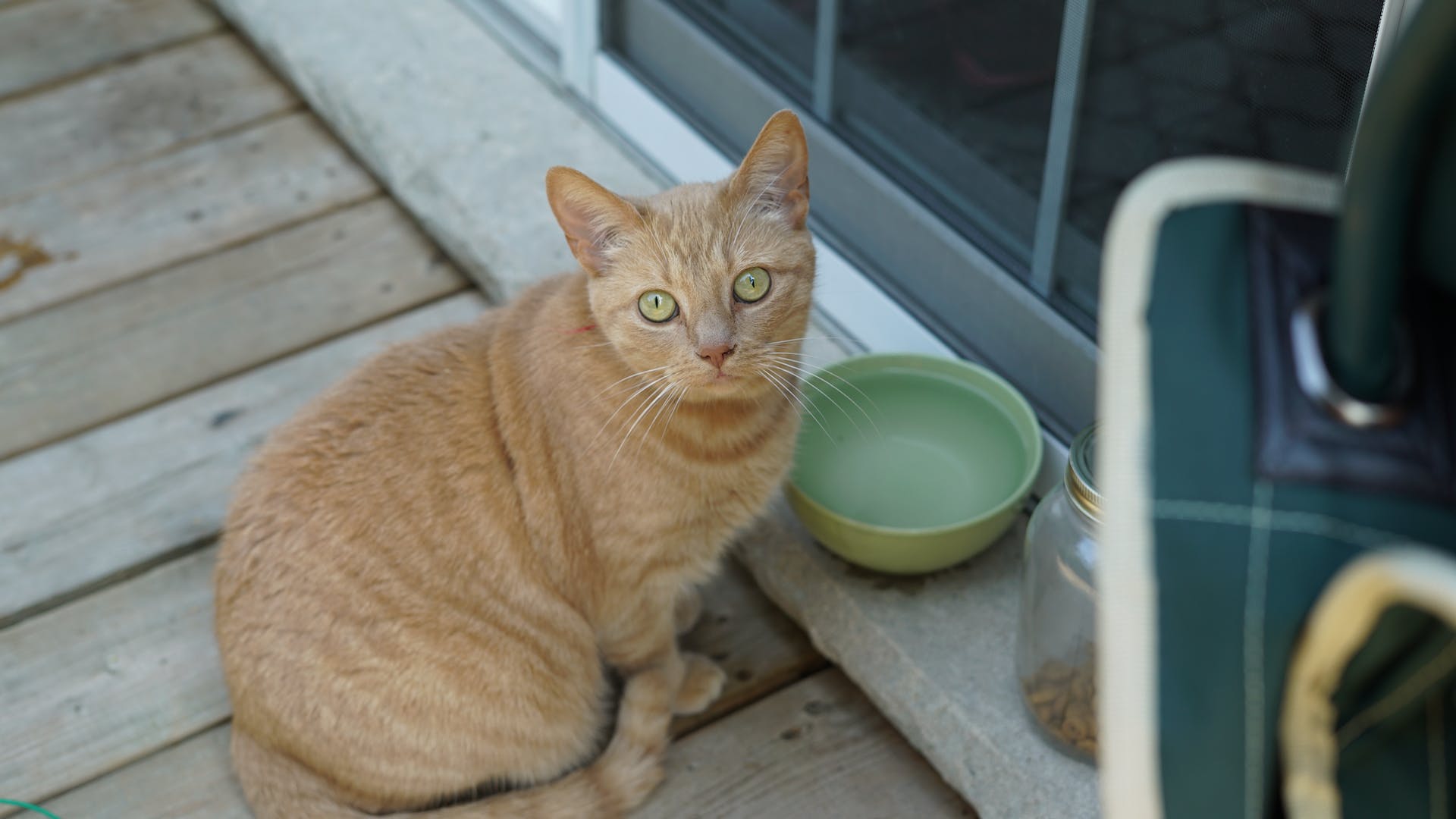
How many calories should a cat eat?
In general, vets recommend feeding your cat between 24-35 calories per pound daily.3 So, for example, if your cat weighs 10 lbs (or 4.5 kg), you’re best off feeding them between 240-350 calories per day.
💡 This is why it’s always a good idea to monitor your cat’s weight to ensure it’s along the healthy guidelines for their breed and size. Your cat’s body condition score can also help you get an idea.
How much to feed a cat by age
Here’s how much to feed a cat by age, as recommended by the Animal Medical Center of Chicago:4
- Kittens
Growing kittens (weighing between 4-10 lbs, or 9-22 kg) need between 275-545 calories as they grow. - Neutered adult cats
A neutered adult cat needs slightly fewer calories than intact ones. That’s around 30 calories per pound of body weight. So, for example, your 10 lb neutered cat might need around 305 calories per day. - Intact adult cats
Need around 40 calories per pound of body weight. So your 12 lb intact cat might need around 350 calories per day.
💡Use this nifty cat calories calculator to figure out a ballpark of how many calories your cat might need. And remember: in general, overweight cats need fewer calories than normal-weight adult cats in order to reach a more healthy weight range.
How often should I feed a pregnant or nursing cat?
In general, healthy pregnant cats gain weight steadily throughout their pregnancy. (Over 63-65 days.) But they tend to lose much of it while nursing their new kittens. That’s why vets recommend you feed your pregnant cat multiple small meals per day. Slightly increase your cat’s food intake once the kittens are born.
If you’ve got a pregnant or lactating cat at home, be sure to periodically drop by your local vet to stay on top of their health and wellbeing. They can also best advise you on vet-approved options for cat foods meant for your new Mama cat.
How much should you feed a super active cat?
If your cat likes to venture outdoors and explore the neighborhood, they’re likely to need more calories to fuel their activity. In fact, the same amount of calories an outdoor cat burns off might lead to an indoor cat gaining weight instead. Outdoor cats also tend to hunt their own food – especially mice and birds. So in their cases, you might only need to feed them once a day. (To avoid any unnecessary weight gain.)
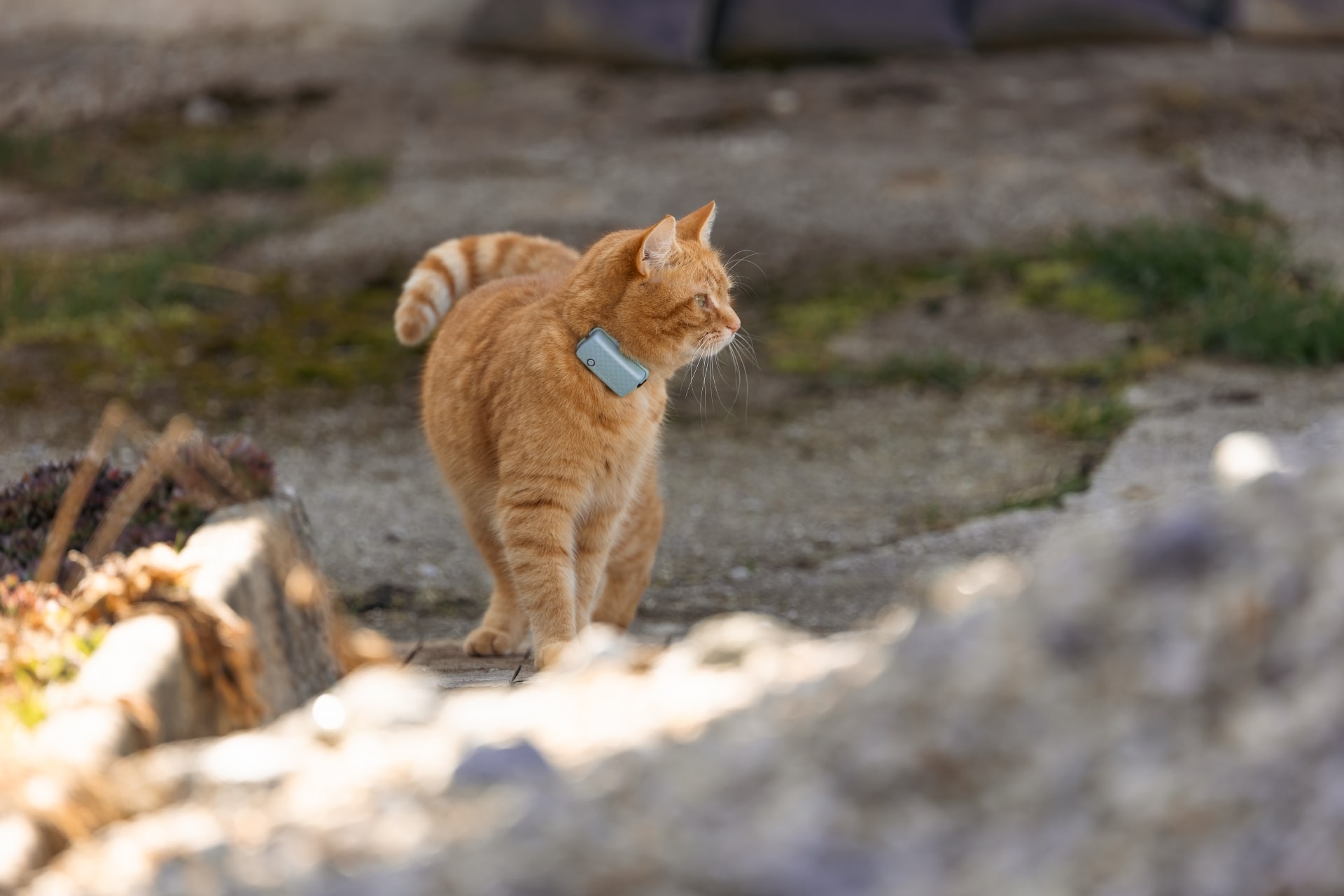
💡A cat GPS tracker with Health Monitoring can help you both track your cat’s real-time location – and also their activity, including how many calories they’ve burned. So you can portion out their meals and keep them at a healthy weight.
How much dry food to feed a cat?
According to Dr. Beth Turner from PreventiveVet, the recommended amount of dry food for an indoor cat should be around ⅓ to a ½ cup per day. (Or around 80-125 grams.) Which comes to around 167-250 calories, if you’re going for commercially-produced high-quality dry cat food that’s high in protein.8
Just keep in mind that dry cat food tends to be higher in calories than wet cat food. Likewise, a dry food-only diet might end up dehydrating your cat because it has lower water content.
How much wet food to feed a cat?
Much like dry cat food, vets recommend portioning out wet foods in one-thirds per day. The frequency can depend on what your vet might recommend for your cat specifically – as well as the feeding routine they’re used to. So if your cat, say, gets to eat around 300 calories daily, vets recommend portioning out their wet food in ⅓ cans.
Some wet cat food options also come in pre-divided, meal-sized portions. Most wet cat food brands also include feeding instructions depending on your cat’s age or reproductive condition.
💡 Wet cat food is also a better option for kittens who are teething, or senior cats who might be prone to under-eating.
More tips to stay on top of cat calories per day
- Use a food scale to measure out your cat’s portions
So you can easily measure out the exact quantity you’re serving your cat per meal. (By ounce, pounds, or grams.) So you can be more confident you’re serving them the exact amount of food they need to stay happy and healthy. - Weigh your cat regularly to spot any changes
Vets recommend weighing your cat at least once a week. Doing so can help you spot changes in their body weight more quickly. Which, in some cases, can indicate they’re sick. Or that they’re eating more or less than they should – which, over time, can cause health conditions like diabetes.) - Be mindful of treats
Vets recommend that treats should only be around 10% of your cat’s overall diet.15 So if your cat is on around 250 calories per day, that’d make their treat allowance only around 25 calories in all. (Which might be like a large biscuit – or an extra handful of kibble.) - Watch out for any changes in your cat’s eating habits
It could be due to already getting fed – or a more serious health condition, including dental problems, stomach trouble, or even eating something toxic.
Where a GPS & Health tracker for cats can help
Feeding your cat the right amount can sometimes feel like a guessing game – especially if they spend a lot of time outdoors. That’s where keeping tabs on your cat’s location and activity with a smart cat collar can be a lifesaver. Like, for example, with the Tractive GPS & Health tracker for cats.
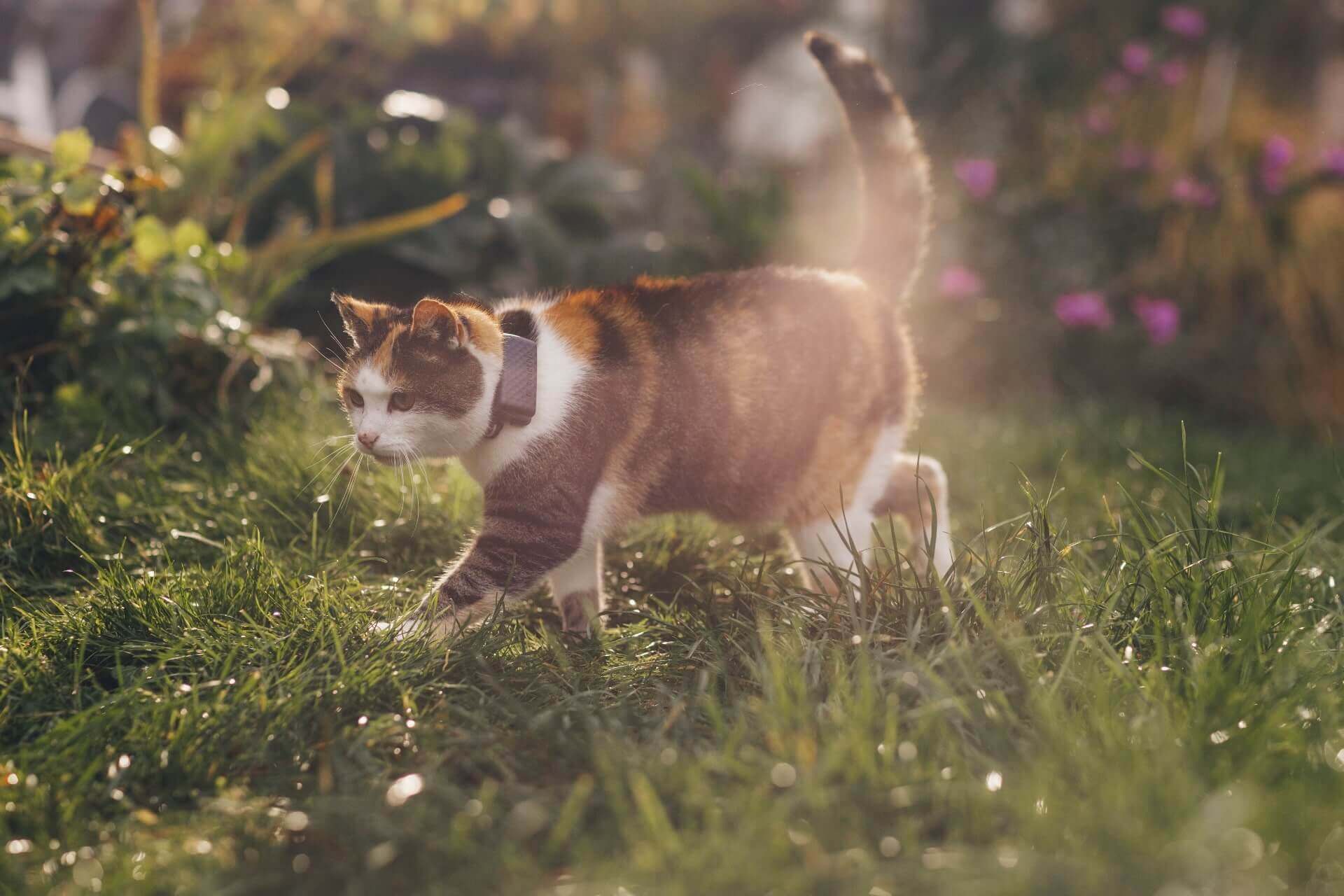
Strapped to your cat’s collar, your trusty Tractive device can help you:
- Figure out your cat’s hunting spots
From their Location History, which can help you identify areas your cat likes to spend time in. Whether for hunting prey or getting a few extra treats from your neighbors. - Portion out your cat’s meals smarter
By checking their Activity Monitoring data, which tells you how many calories your cat has burned throughout the day. So you can make sure you’re feeding them just right and keeping them at a healthy weight. - Catch on to a potential health issue much in advance
If there’s a weird spike or drop in your cat’s activity, your tracker sends you a Health Alert. So you can take action early, get them to a vet, and be more likely to have a more productive, informed, data-driven discussion.
Wrapping up: How to build a happy, healthy cat feeding schedule
Feeding your cat is way more than just dumping a load of kibble into their bowls. It’s about taking an active role in your feline friend’s health and wellbeing. So here’s a quick recap:
- How often should you feed a cat?
In general, around 2-3 times a day around the same time seems best. - How many calories should a cat eat?
It depends on factors like your cat’s size, age, and activity levels. Growing kittens, active outdoor cats, and pregnant/nursing cats need slightly more calories than neutered adult cats and indoor cats. A general rule of thumb is around 24-35 calories per pound of body weight for healthy adult cats. - How much dry food to feed a cat?
Vets recommend around ⅓ to a ½ cup per day. (Which is around 80-125 grams.) - How much wet food to feed a cat?
Vets recommend around 4-5 ounces (or 113-140 grams) of wet cat food per day.
Your vet is your best source of advice on building a personalized feeding schedule for your cat. With consistency and regular monitoring, you’ll be well on your way towards a healthy, fulfilled life with your feline friend.
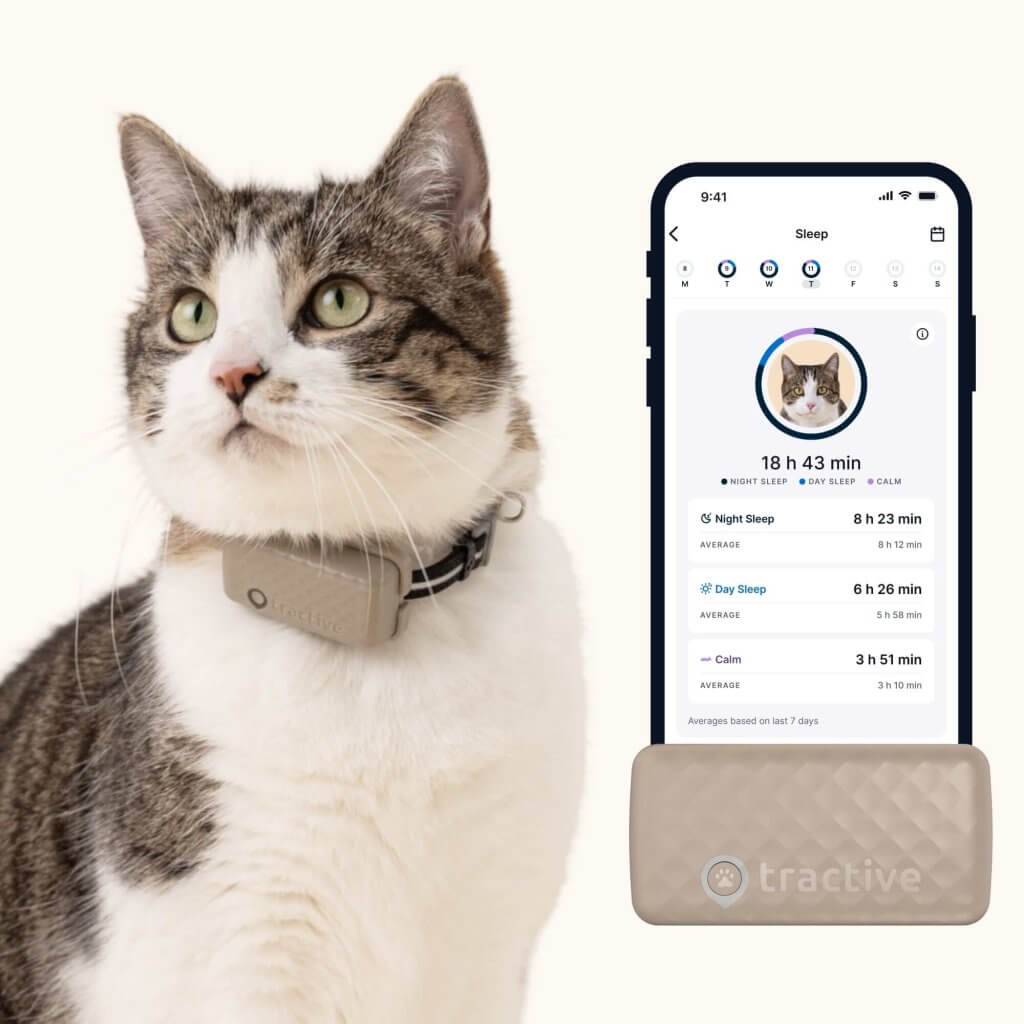
Help your cat stay fit and healthy
Get a complete overview of how much exercise and rest they’re getting. Compare their activity to that of similar cats. Set daily goals.
And if you’ve liked this post, share it with a friend or a loved one – and let’s help build a safer, kinder world for our furry friends together.

